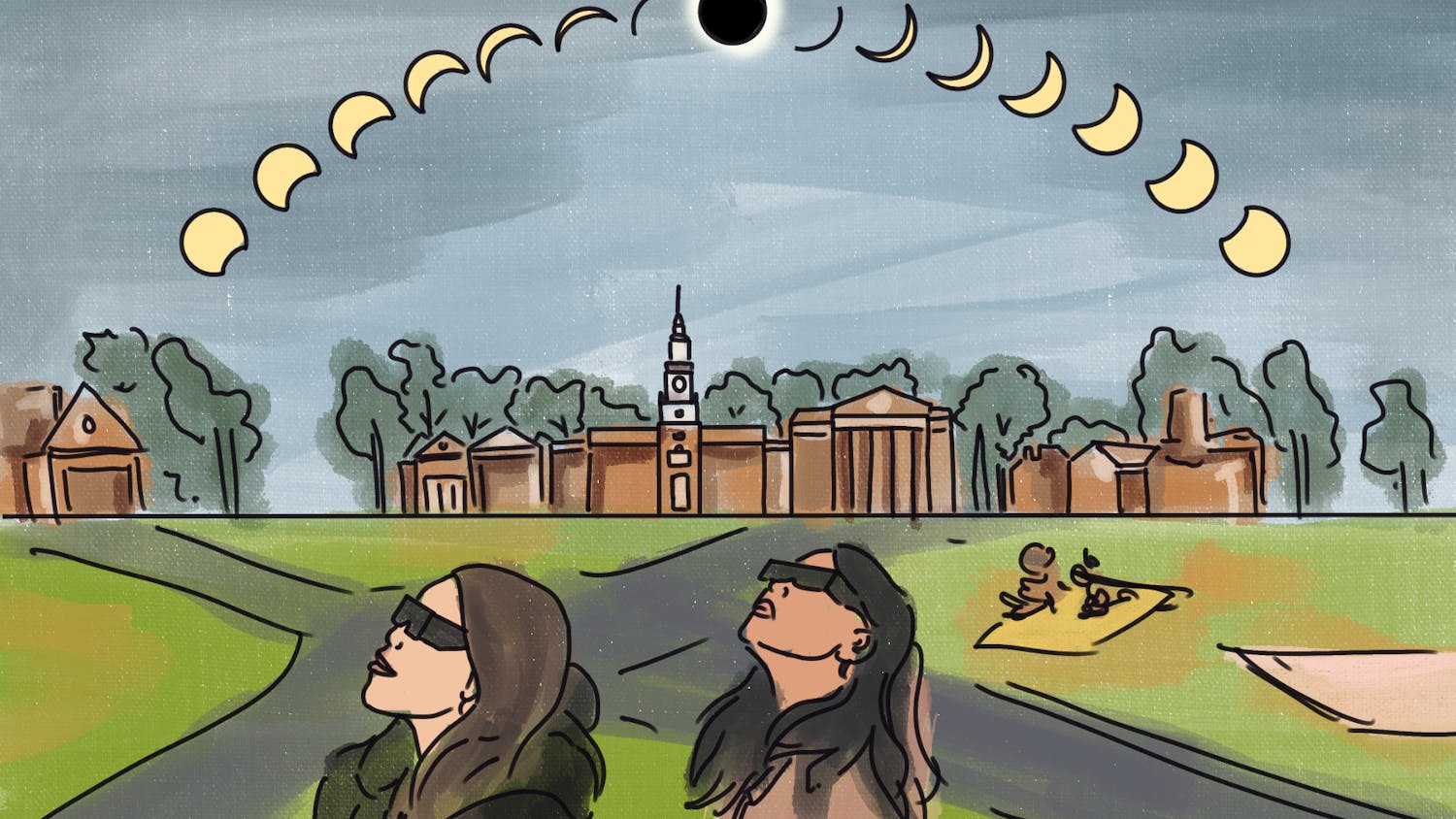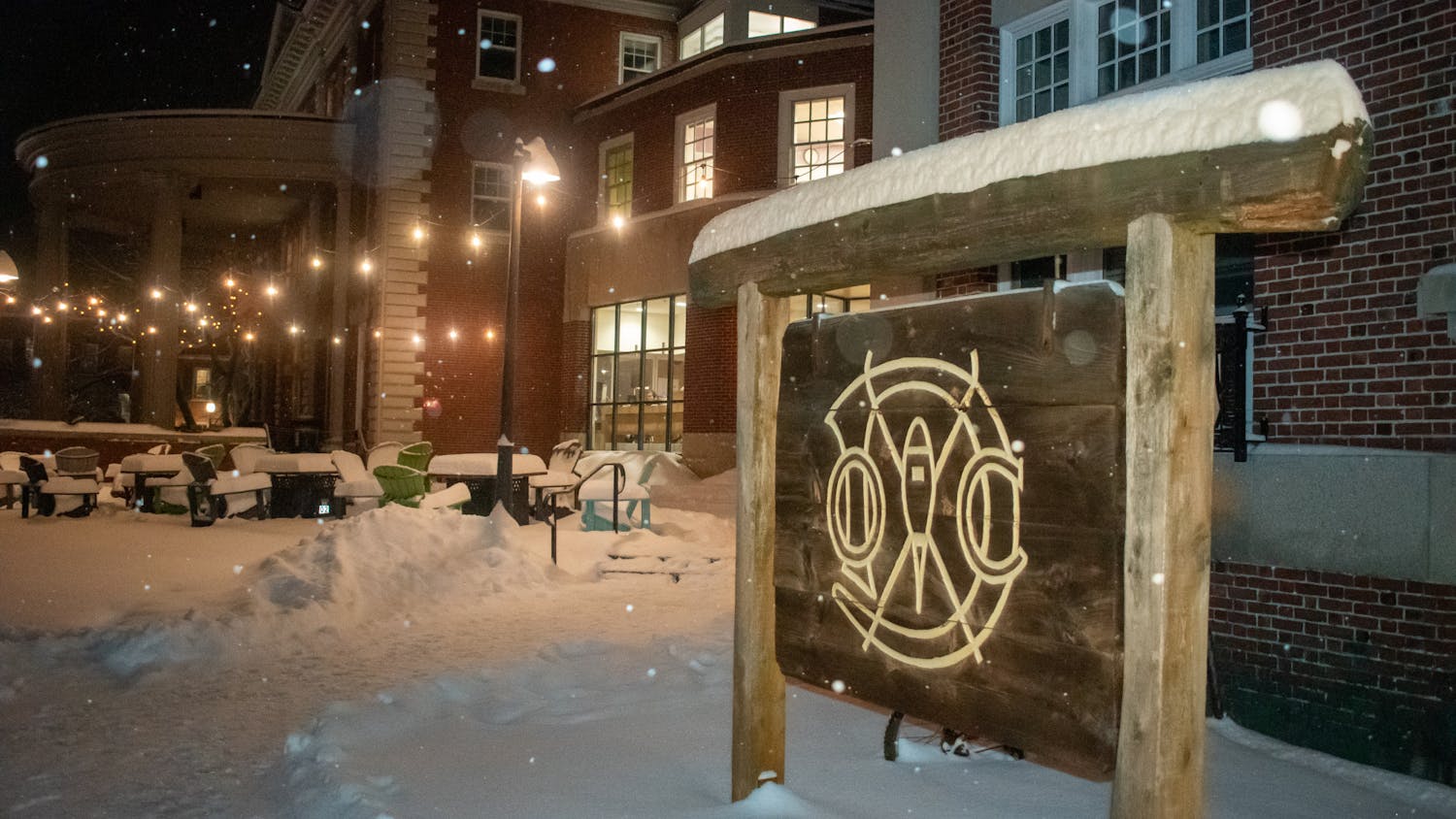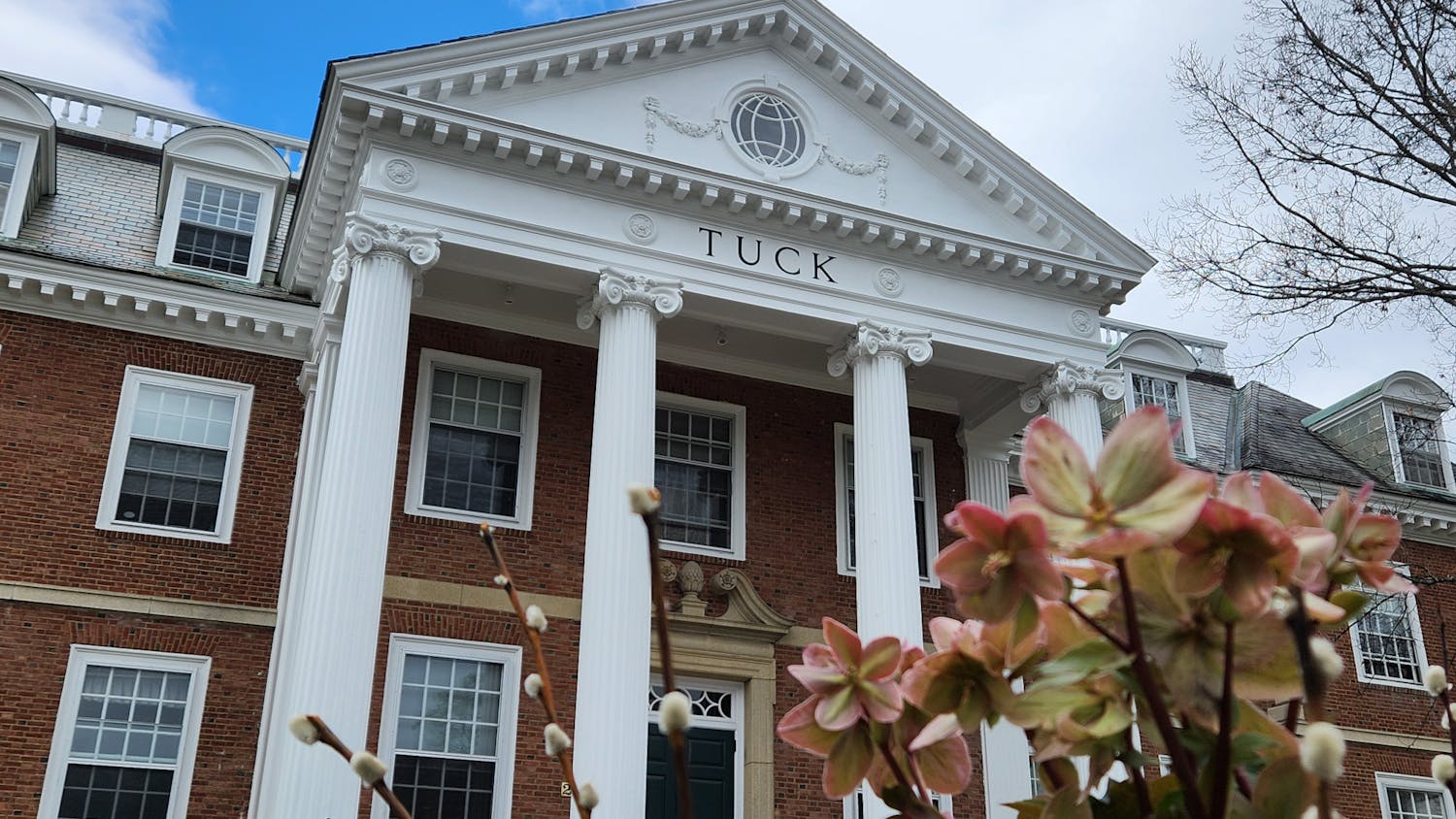Though activism around many issues is present at both Dartmouth and its peer institutions, the focus of this activism differs from school to school. The College, for example, has seen significant dialogue in recent months about race relations and diversity on campus, while students at other Ivy League schools said issues such as sexual assault and mental health occupy the campus spotlight. Similarly, administrative responses to such activism has varied across schools.
Much of the activism at Dartmouth in recent months has centered around racial relations, as students of color say that they do not feel adequately supported on campus. One of the most controversial events on campus was a “Blackout” that took place last November, sponsored by the Dartmouth Chapter of the National Association for the Advancement of Colored People, the Afro-American Society and Student Assembly. Activists dressed in black gathered at Novack Café and marched across the Green to Dartmouth Hall in solidarity with students of color at Yale University and the University of Missouri and the greater Black Lives Matter movement.
After the official protest ended, several students moved to Baker-Berry Library, where they continued to protest. Several participants shouted at library patrons for not standing up and joining them.
The Blackout was originally designed as a response to the defacement of a display erected in the Collis Center, NAACP president John Diakanwa ’16 said. The display showed 74 shirts, symbolizing 74 unarmed people who were killed by police in 2015. Twenty-eight of the shirts were black to represent the unarmed black victims of police violence.
Several of the shirts were stolen from the display after its unveiling. As a form of counter-protest, the NAACP decided to organize the Blackout to demonstrate students’ continued dedication to spreading their message, Diakanwa said.
“You can take black shirts off of a board, but you can’t really rip them off of a person,” he said.
However, after hearing about protests at Yale and Mizzou, the protest was reorganized, broadening the focus from the display in Collis to a more general showing of solidarity for students at those schools, Diakanwa said.
Many students and alumni have criticized the protesters who moved to the library afterwards for what they describe as overaggressive actions towards library patrons.
Brian Chen ’17, while declining to comment on the substance of the protesters’ concerns, said he did not approve of the library as a space for potential protesters. While he supports freedom of speech, it should be limited to appropriate venues that do not disrupt the functioning of the university, he said.
Sandor Farkas ’17 said that while he believes the protesters genuinely believe in their own message and are not simply seeking attention, he disagrees that many of the issues they claim to face are necessarily limited to certain groups. He criticized a mentality of “competitive suffering,” saying that while students might come from different backgrounds, they can still face similar issues.
Diakanwa said that he understands critics and their complaints about the library protest. He said the raw emotion of the protesters likely made other students uncomfortable, especially because many of them had likely never realized how strongly the protesters felt. Many of the protesters experienced a “very different Dartmouth” than the students who were shocked, he said. At the same time, Diakanwa said he did not think that the emotions of the protesters should detract from their overall message.
Another recurring issue at the College has been faculty diversity. Several student activists argued that faculty of color are underrepresented at Dartmouth, which they believe negatively impacts Dartmouth as an academic institution.
Diakanwa said that faculty diversity is one of the main issues the NAACP is currently raising with administrators. He noted this is in part because the issue affects the entire population at Dartmouth, not just students, he said.
Geovanni Cuevas ’14 agreed that Dartmouth has issues with retaining faculty of color. In the last couple of years there has been a “mass exodus” of faculty of color from the College, he said.
“We see professors that we adore, admire, respect, leave this place,” he said.
The constantly revolving nature of Dartmouth’s student body contributes to the lack of discussion on minority faculty retention, Cuevas said. As students move on and off campus in accordance with their D-Plans, they lose the focus and organization necessary to sustain long-term social movements, he said.
According to Dartmouth’s 2016 Diversity Report, compiled by the Office of the Vice-Provost for Academic Initiatives, in November of 2014 there were 110 faculty members from underrepresented minority groups out of a total of 678 faculty members, or about sixteen percent of the total. Within the College of Arts and Sciences, there were 69 URM faculty members, representing 17.6 percent of the total.
Felicia Teter ’13, who has participated in previous student protests, spoke specifically about issues with tenure at Dartmouth, saying that numbers of tenured faculty of color at Dartmouth are “astronomically” low. This could in part be because of existing social structures, as many currently tenured faculty members are white men, she said. Since tenure-granting committees are made up of currently tenured faculty within a department, who likely are satisfied with the current system, they might be inclined to turn away minority candidates who speak out against the status quo, leading to a lack of faculty diversity, she said.
In 2013, only four percent of full professors came from URM groups, a decline from nearly six percent in 2007, according to the Diversity Report. This number is lower than averages within the Ivy League and across the nation, which were both about 5.5 percent in 2013. There are also no URM full professors in the social sciences, English or engineering departments at Dartmouth.
Numbers for URM associate professors, the majority of whom possess tenure, are higher. In 2013, just over 16 percent of associate professors at Dartmouth were URM, compared to just over six percent in 2007, according to the Diversity Report. This 2013 number is higher than averages across the Ivy League and the nation, which were at about ten percent in 2013. However, the report also states that in 2013 there were no URM professors in the sciences at Dartmouth.
Teter also criticized what she says she perceives as a lack of student feedback in the tenure-granting process. Right now it is difficult, if not impossible, for students to learn which professors are up for tenure, she said. Student feedback should be weighed more heavily in the tenure-granting process, Teter said, as it is impossible to speak to the quality of a candidate’s teaching abilities without input from students who have actually had classes with that professor.
Under the current system, the Dean of Faculty office will solicit letters from former students when reviewing an assistant professor for promotion to associate professor with tenure, according to the Dartmouth Faculty Handbook. In addition, candidates are allowed to submit to their associate dean a list of students whom they believe can speak to their teaching abilities; letters will also be solicited from these students.
Students interviewed from other schools mentioned that while race and diversity issues are definitely a part of campus discussions, other issues — like sexual assault, mental health and academic requirement s — also make up a large part of campus discourse.
Gloria Tso, a freshman at Columbia University who has been involved in protests on campus, said that it is difficult to point out a single area of focus for protests at Columbia, because students at the university tend to be very active on social issues. The biggest social movement was probably No Red Tape, an organization protesting how the university has responded to complaints of sexual violence, she said. The case of Emma Sulkowicz, who carried a mattress around with her until graduation as a performance art piece protesting her alleged rapist’s continued enrollment at Columbia, is also still fresh in people’s minds, Tso said.
Justice Gaines, a senior at Brown University, said that in recent years the three biggest issues on campus have been sexual assault, race and first-generation student issues. In the last three to four years environmental issues have also been a large topic of discussion at the university, xe said.
Ruben Reyes, a freshman at Harvard University who attended the Ivy League Latinx conference last fall, said that sexual assault and mental health have been discussed often in recent months. Reyes, who is also a member of Fuerza Latina, a pan-Latino cultural group on campus, said that discussions about race are also prevalent within his personal community.
Just as issues at different campuses reflect different concerns, so too have administrative responses differed from campus to campus, as have student reactions to those responses. At Dartmouth, for example, administrative responses to protests have been mixed. Vice provost for student affairs Inge-Lise Ameer, for example, originally called the Blackout protests a “wonderful, beautiful thing” and apologized to protesters for having to deal with “a whole conservative world out there that’s not being very nice.”
She later apologized for the statements towards conservatives, and reiterated her support for all students on campus.
College President Phil Hanlon released an email praising the official Blackout protest, but calling the alleged use of vulgar epithets, personal insults and intimidating actions by the protestors and students in the library “antithetical to our values and goals as an institution.”
At the beginning of February, Hanlon and Provost Carolyn Dever announced the creation of three working groups composed of students, faculty and staff aiming to address issues of diversity at the College.
At Brown, president Christina Paxson released a draft document last November about how to promote diversity and inclusion at Brown, with a final draft released on Feb. 1. The plan sets aside $165 million to increase representation of historically underrepresented groups on campus, support research on diversity and inclusion, improve life for students from underrepresented groups and enhance the curricula to include programming on inclusivity.
At Harvard, a working group on diversity and inclusion released a report in November detailing their findings. The report investigated diversity at other Ivy League schools in comparison to Harvard and provided recommendations on how Harvard can improve. The report included calls for increasing cultural training for college staff, making it easier for students to find diversity-related courses and expanding mental health support for historically underrepresented groups.
In November, Yale’s president Peter Salovey announced the creation of a five-year $50 million diversity initiative to support faculty recruitment and retention.
Responses to administrators have been mixed at all schools. Many activists believe that while administrators are taking a step in the right direction, they have not yet done enough.
Diakanwa said that administration at the College has responded to protests in similar ways in the past: speaking with student leaders, listening to their concerns and then letting them graduate without enacting serious change. Given this, he is cautious about believing things will change in the foreseeable future. While Diakanwa said he believes current administrators like Hanlon and Dever genuinely do want to see change at the College, he does not think this is the same as actually being willing to enact change.
While Dartmouth administrators have generally been willing to listen to protesters after major events, Cuevas said, this eventually becomes inadequate if actual changes are not made. The College needs to fully appreciate dialogues about social justice, he said, such as how white supremacy — meaning systemic social structures that favor white people – has influenced and continues to influence College culture. While critical of some administrators, such as Hanlon, for not being active enough in enacting change — for example, by not having enough presence with students of color and not showing up to events relating to their issues — he praised others, like Ameer, for genuinely trying to help minority students on campus.
In contrast, Farkas was critical of Ameer’s position at the College, which he believes is designed specifically to implement initiatives in response to student protestors, even though other members of the student body might disagree with them. He believes administrators should be less involved in regulating student relations on campus, allowing instead for students to solve these issues themselves.
Chen said he would like to see student protestors who violate college policies be subjected to appropriate judicial processes. The administration should also be firmer in condemning protestors who violate such policies, he said, citing Hanlon’s email as a step in the right direction.
At Columbia, administrators tend to respond to student activism selectively, Tso said. As an example, she cited how the university quickly addressed protests about a first-year science course, promising to consider changing it, while moving much more slowly to address other issues like sexual assault.
At Brown, the administration should work more to improve student support and be less reactionary in taking student input, Gaines said. Xyr opinion of the administration has not changed, though over the past year they have been more responsive, xe said. They often talk about issues without truly trying to change them, xe said.
It is hard to group all administrators at Harvard together in terms of their response, Reyes said. While some have been open to conversation, others have been more complacent, he said. He hoped that students would not lose momentum after returning from winter break.



